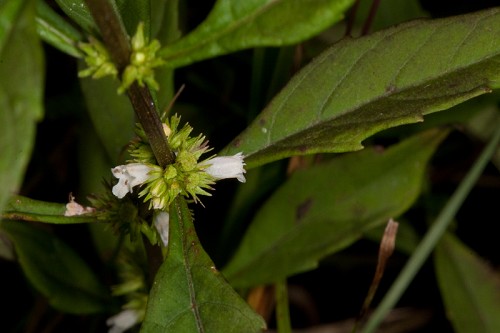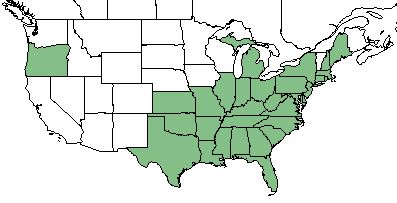Difference between revisions of "Lycopus rubellus"
(→Description) |
(→Taxonomic Notes) |
||
| Line 20: | Line 20: | ||
==Taxonomic Notes== | ==Taxonomic Notes== | ||
| − | Synonym: ''L. velutinus''<ref name="Weakley 2015"/> | + | Synonym: ''L. velutinus'';<ref name="Weakley 2015"/><ref name="USDA"/> ''L. angustifolius''<ref name="USDA"/> |
==Description== <!-- Basic life history facts such as annual/perrenial, monoecious/dioecious, root morphology, seed type, etc. --> | ==Description== <!-- Basic life history facts such as annual/perrenial, monoecious/dioecious, root morphology, seed type, etc. --> | ||
Revision as of 18:41, 1 February 2018
| Lycopus rubellus | |
|---|---|

| |
| Photo by the Southeastern Flora Database | |
| Scientific classification | |
| Kingdom: | Plantae |
| Division: | Magnoliophyta - Flowering plants |
| Class: | Magnoliopsida - Dicots |
| Order: | Lamiales |
| Family: | Lamiaceae |
| Genus: | Lycopus |
| Species: | L. rubellus |
| Binomial name | |
| Lycopus rubellus Moench | |

| |
| Natural range of Lycopus rubellus from USDA NRCS Plants Database. | |
Common Names: stalked bugleweed;[1] taperleaf water horehound[2]
Contents
Taxonomic Notes
Synonym: L. velutinus;[1][2] L. angustifolius[2]
Description
Lycopus rubellus is a dioecious perennial forb/herb.[2]
Distribution
This species occurs from Maine, westward to Michigan, and southward to Florida and Texas.[1]
Ecology
Habitat
L. rubellus is found in marshes, swamp forests, and bottomlands.[1]
Phenology
In the southeastern and mid-Atlantic United States, L. rubellus flowers from June through November.[1]